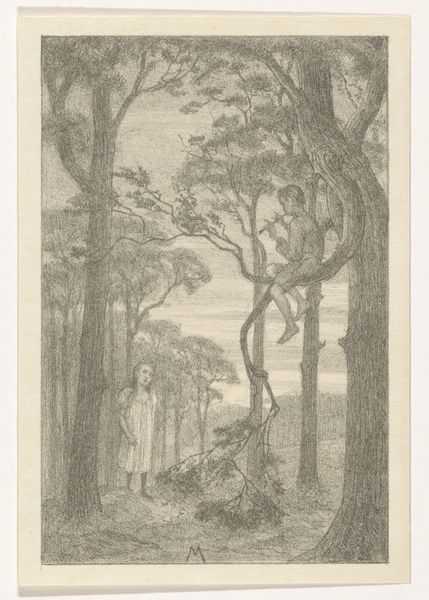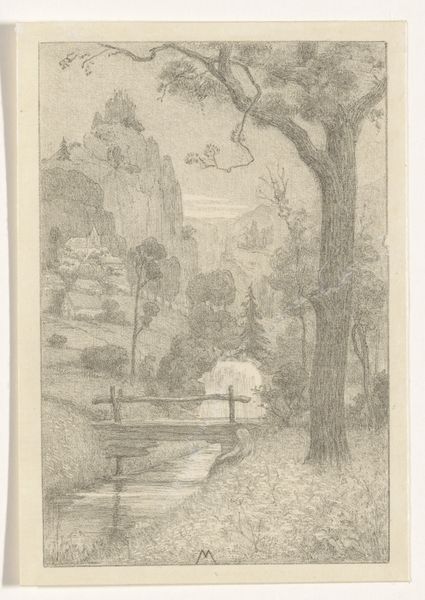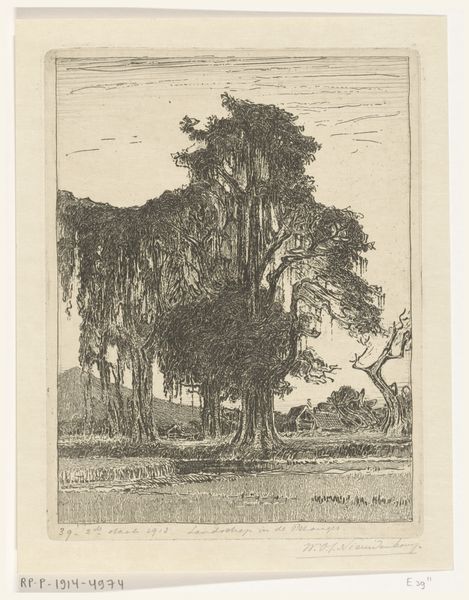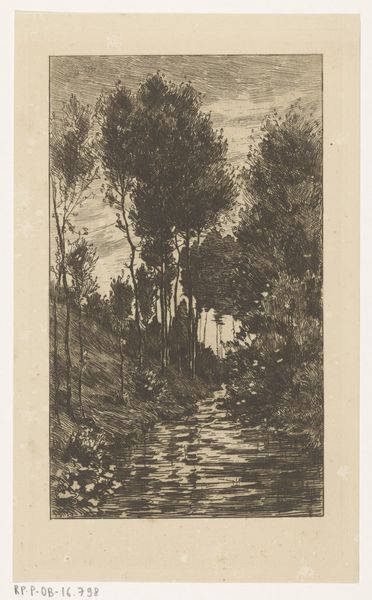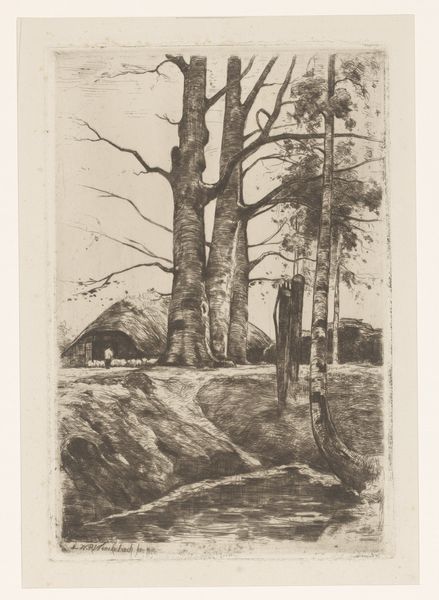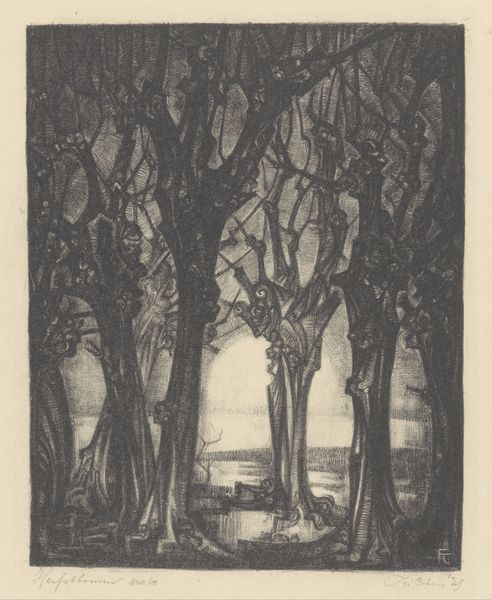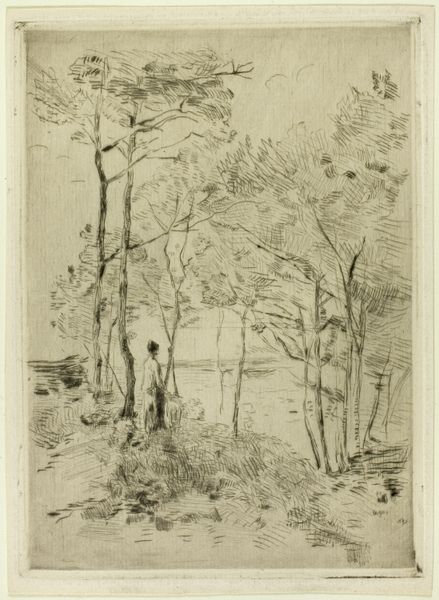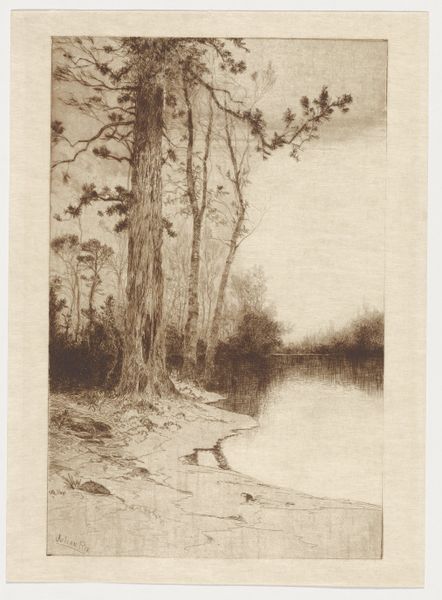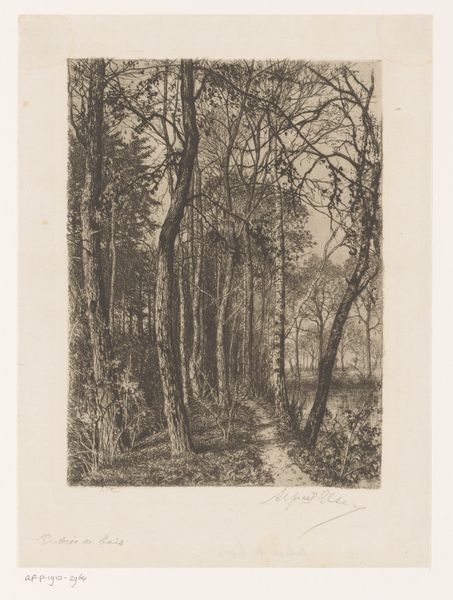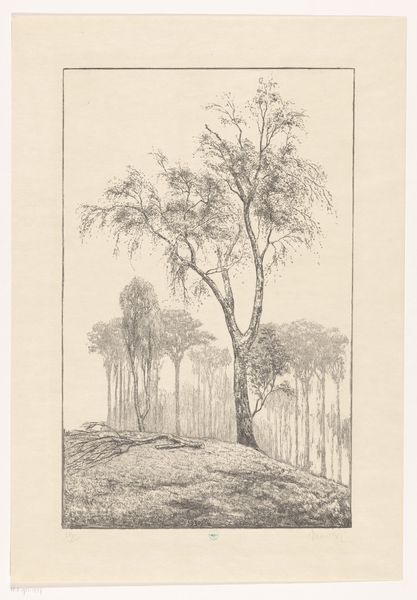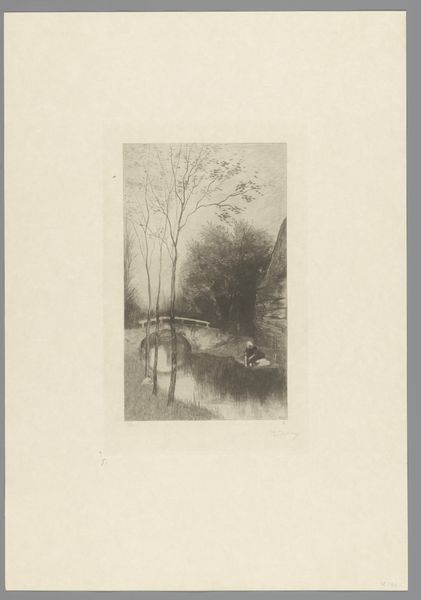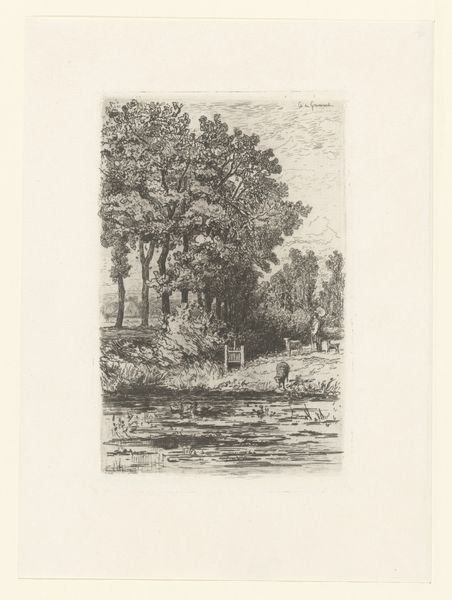
Dimensions: height 148 mm, width 102 mm
Copyright: Rijks Museum: Open Domain
Curator: This landscape evokes a sense of quiet melancholy. Is that your immediate impression, too? Editor: Absolutely. It's somber, almost dreamlike. The monochromatic palette really heightens that feeling. What are we looking at specifically? Curator: This is Simon Moulijn’s "Landschap met bomen en beek," or "Landscape with Trees and Creek," created in 1901. The Rijksmuseum holds this beautiful graphite drawing. It has an etching-like quality, doesn't it? Editor: It does. What I find fascinating is the way Moulijn uses the stark contrast to draw our eye. The stand of trees on the left, reflected in the still water... almost like looking into the past. I can understand his place in the Dutch Impressionist canon. What do you notice when you study this piece in terms of its imagery and symbols? Curator: The repetition of vertical lines, primarily in the trunks of the trees, but echoed even in the wispy reeds in the foreground, gives me a strong sense of continuity. And of course, a strong association of trees to heaven and nature deities existed throughout the cultures surrounding The Netherlands from ancient times. It speaks of endurance, resilience... but also isolation. Each tree is solitary, separated, yet still part of the whole. A subtle statement on society, perhaps? Editor: I think that’s insightful. There's also something inherently political about landscape art. It’s almost impossible to separate the rise of landscape painting with emergent national identity in the 19th century. Do you see reflections of Dutch identity here? Curator: Not overtly. It steers clear of romanticized depictions of windmills or iconic countryside scenes. It seems Moulijn sought instead the elemental: land, water, and the trees standing sentry over them. Stripped bare. It transcends pure Dutch identity and reaches to the primal symbolism present throughout world mythology. It’s deceptively powerful, isn't it? Editor: It is. Thank you, that added depth makes all the difference in how I will see the work from now on. Curator: Indeed. I hope it offers our listeners new lenses for engaging with visual culture.
Comments
No comments
Be the first to comment and join the conversation on the ultimate creative platform.
